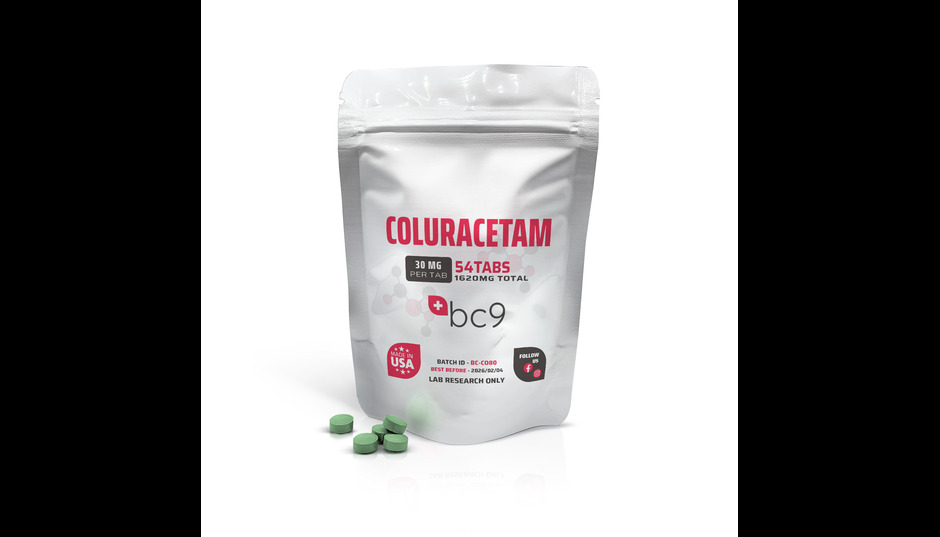Understanding Coluracetam Capsules: Research-Grade Precision
Coluracetam capsules are widely used in coluracetam capsules research for their unique ability to influence high-affinity choline uptake (HACU), a critical step in acetylcholine synthesis. Because these capsules are primarily intended for laboratory and investigational settings, verifying their purity, potency, and molecular stability is essential. High-quality coluracetam ensures reliable research outcomes, reproducibility, and accurate data modeling in neurochemical studies.
Reliable quality testing examines the compound’s structural integrity, excipient behavior within capsules, batch contamination risk, and pharmacokinetic predictability.
Key Quality Indicators in Coluracetam Capsule Testing
A robust quality analysis includes chemical identity verification, quantification of active compound concentration, and assessment of microbial, chemical, and particulate contamination. The following metrics form the baseline for determining whether a sample meets research-grade expectations:
1. Assay Purity (%)
Purity percentage reflects how much of the capsule’s content is true coluracetam versus carriers, degradation byproducts, or contaminants. Research-grade coluracetam typically meets or exceeds 98–99% purity, confirmed through HPLC or UPLC analysis.
2. Heavy Metal Screening
Laboratories evaluate levels of arsenic, mercury, cadmium, and lead. Because coluracetam originates from complex synthesis pathways, heavy metal testing ensures that raw chemicals and manufacturing equipment have not introduced harmful residues.
3. Residual Solvent Testing
Proper solvent removal is essential for safe experimental application. Analysts use GC-MS to detect traces of benzene, toluene, methanol, and other class-specific solvents that must fall below standardized thresholds.
4. Microbial Contamination Testing
Although coluracetam is a synthetic nootropic, capsule fillers can introduce:
- aerobic bacteria
- mold spores
- yeasts
Certificates of analysis (COAs) should confirm compliance with limits of detection for total plate count, E. coli, S. aureus, yeast, and mold.
How to Verify Coluracetam Identity Using Modern Analytical Tools
High-Performance Liquid Chromatography (HPLC)
HPLC separates coluracetam from impurities using retention time measurement. Analysts compare chromatographic fingerprints with certified standards to verify identity and purity.
Mass Spectrometry (MS)
MS confirms molecular weight and identifies structural inconsistencies. A clean MS profile with the expected m/z value validates the compound’s authenticity.
Nuclear Magnetic Resonance (NMR) Spectroscopy
NMR provides in-depth insight into molecular structure, bonding, and stereochemistry. Researchers rely on proton (¹H) and carbon (¹³C) NMR spectra to ensure no adulteration or unwanted substituent modifications.
Fourier Transform Infrared Spectroscopy (FTIR)
FTIR detects functional groups present in the sample. A spectrum matching the reference standard ensures that the synthetic route produces the correct compound.
Coluracetam Capsule Stability: Storage, Shelf Life & Degradation
Photostability
Coluracetam is sensitive to UV light, which may cause breakdown into inactive metabolites. Capsules should be stored in opaque containers to avoid spectral degradation.
Thermal Stability
Excessive heat may disrupt HACU-related molecular pathways by altering structural bonds in the compound. Stability testing typically evaluates temperature conditions at:
- 25°C (room temperature)
- 40°C (accelerated stability)
- 60°C (stress testing)
Hygroscopic Behavior
Some capsule fillers absorb moisture, compromising capsule weight consistency and potentially accelerating degradation. Moisture analysis ensures the capsule matrix remains chemically stable.
How to Read and Interpret a COA for Coluracetam Capsules
A Certificate of Analysis (COA) validates scientific credibility. Key sections to review:
1. Product Identity
Includes CAS number, structure formula, and batch ID.
2. Purity Assay Results
Typically reported from HPLC testing look for ≥98%.
3. Microbial & Heavy Metal Profile
Should list “ND” (not detected) or acceptable ppm values.
4. Solvent Residue Levels
GS-MS data should verify compliance with ICH Q3C guidelines.
5. Additional Testing (Optional but Beneficial)
- NMR spectra
- FTIR plots
- Melting point data
- Water content (via Karl Fischer titration)
Research teams conducting coluracetam capsules research often require complete documentation to validate reproducibility.
Advanced Testing Protocols for Research-Grade Coluracetam
Chromatographic Degradation Profiling
Stability-indicating HPLC evaluates how the compound behaves under forced degradation:
- acid hydrolysis
- base hydrolysis
- oxidation
- UV degradation
This ensures researchers understand potential breakdown pathways.
Particle Size & Uniformity Testing
Capsule uniformity prevents dosing inconsistencies in research. Laser diffraction or dynamic light scattering (DLS) determines:
- particle diameter distribution
- homogeneity
- encapsulation efficiency
Excipient Compatibility Analysis
Common excipients include:
- microcrystalline cellulose
- magnesium stearate
- silicon dioxide
Compatibility studies ensure the active compound does not chemically interact with fillers.
Choosing High-Quality Coluracetam Capsules for Research
When evaluating suppliers, consider:
1. Third-Party Verified COAs
Independent laboratory testing increases reliability and reduces bias.
2. Batch-Specific Documentation
Each lot should include its own COA, not a recycled or generic one.
3. Transparent Manufacturing Standards
GMP or ISO-certified facilities ensure consistent production quality.
4. Stability Reports with Real-Time Data
Not all vendors provide stability data; those who do demonstrate superior quality assurance.
5. Packaging Integrity
Tamper-resistant, UV-protective, and airtight packaging preserves compound stability.
Common Red Flags in Coluracetam Capsule Quality
- unexplained deviations in capsule weight
- inconsistent coloration or powder texture
- COAs missing chromatograms or spectral data
- purity levels reported without testing methodology
- vendors refusing to share batch numbers
Such issues signal low quality and may compromise research outcomes.
Final Overview: Ensuring Research-Grade Coluracetam Capsule Quality
A systematic approach to quality testing ensures the safety, purity, and scientific credibility of coluracetam capsules. Comprehensive analysis including HPLC, MS, NMR, microbial evaluation, solvent screening, and stability testing provides researchers with high-confidence materials for coluracetam capsules research and detailed neurochemical investigations.
This meticulous evaluation framework ensures compounds meet rigorous laboratory standards and supports reliable experimental outcomes across various research environments.






